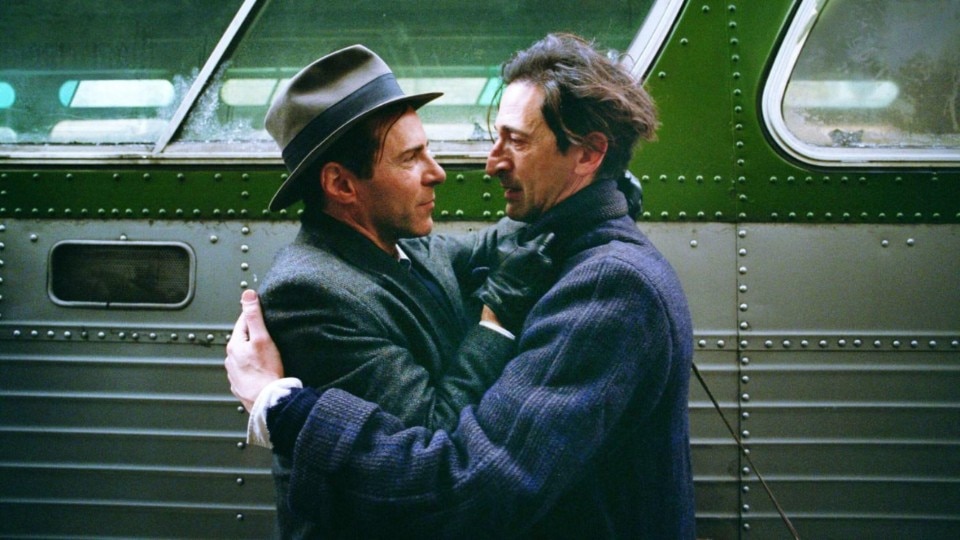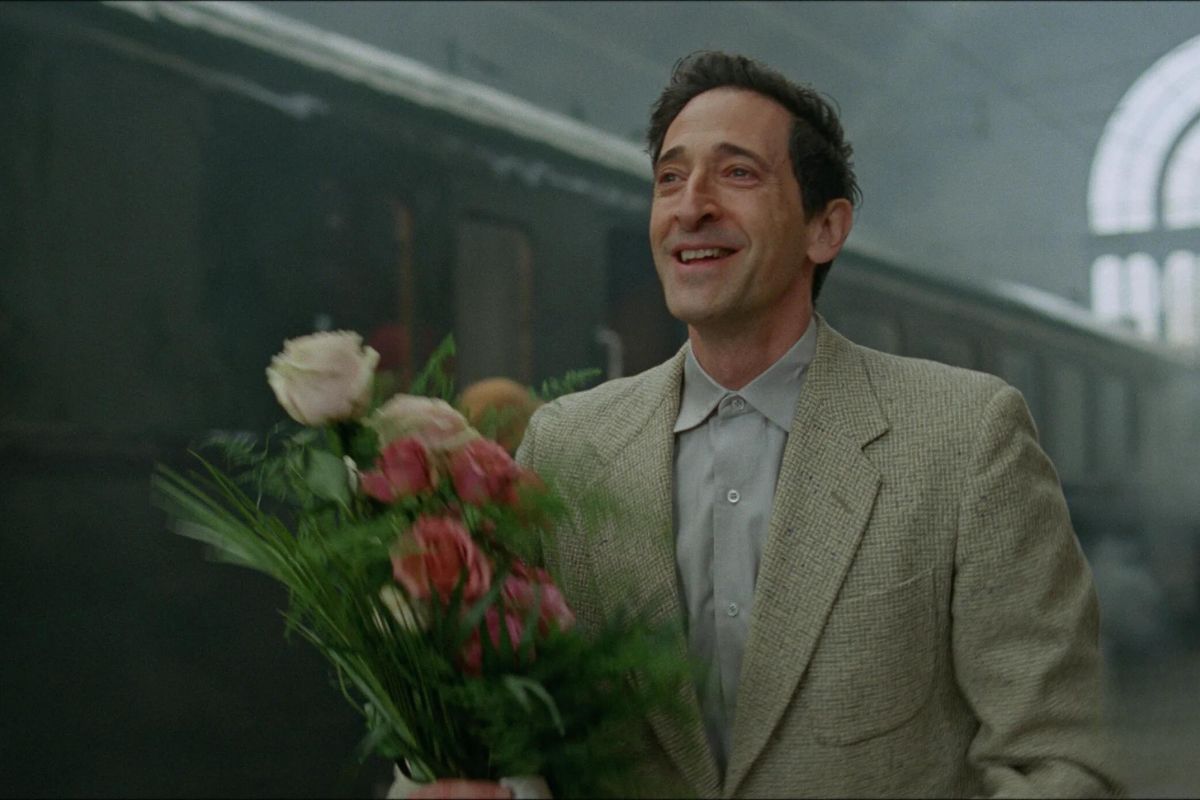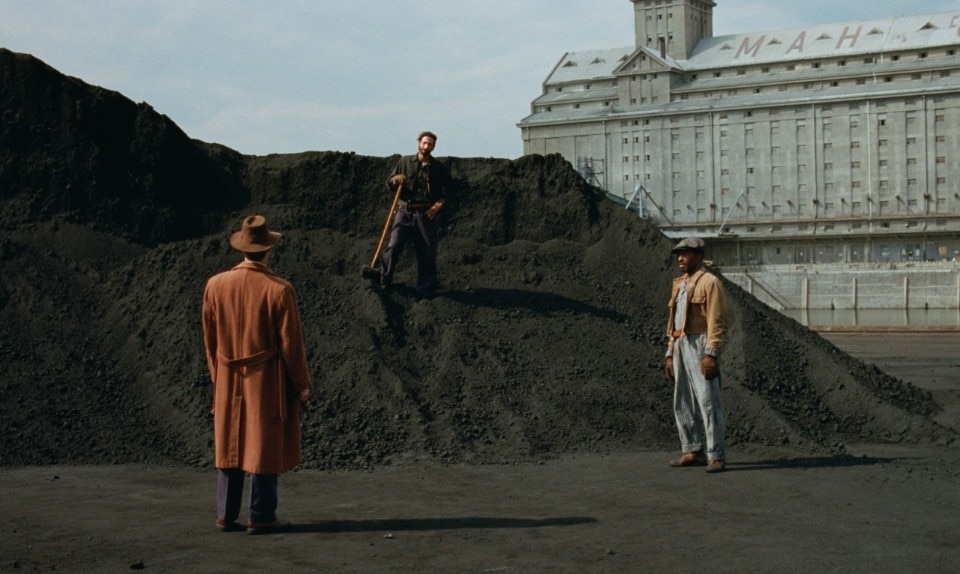Architecture in film is most effective when it collaborates with the story, serving as one element among many − perhaps important, perhaps not − rather than being the focal point of the narrative. Films that focus directly on architects or architectural works often do a disservice to both architecture and design: the framing of these works frequently falls short, struggling to capture the true beauty, merits, or revolutionary potential of the designs.
The Brutalist is a rare exception to this rule − it places the story of an architect and the creation of a monumental work of architecture at its center, yet it succeeded. The film not only showcases some of the most striking images of architecture and design ever put on screen, but it also masterfully captures and portrays what makes architecture an art form and how one can talk about oneself, the world, and the relationships between people through design.

The Brutalist is directed by Brady Corbet, a former actor turned full-time filmmaker, known for his audacious debut Childhood of a Leader and the critically acclaimed Vox Lux starring Natalie Portman. The film has premiered at the ongoing Venice Film Festival and tells the compelling story of László Tóth, played by Adrien Brody, a fictitious Jewish architect and concentration camp survivor. After the war, Tóth emigrates to the United States, transitioning from designing major projects in Hungary to becoming as a manual worker. Tóth’s talent is discovered by a wealthy tycoon, played by Guy Pearce, when he redesigns his library while working with his cousin. He transforms the space into a modern marvel, featuring a panel system, exceptional use of glass and windows, and a central reading chair with tubular, curvy lines.

This creation is not only stunning but also highlighted by Corbet as a significant visual and artistic achievement. Recognizing Tóth’s potential, the tycoon learns of his Bauhaus background and promises to bring Tóth’s wife (Felicity Jones) to America, commissioning him to design a large cultural center, which includes a library, gymnasium, and auditorium which Tóth designs in the Brutalist style. The construction progress will take many years, with numerous interruptions, and will drain the architect’s life. Without revealing too much, as the story unfolds, it becomes clear that this creation is poisonous to the architect, because it is a manifestation of the trauma he suffered. After all, the film was inspired by Jean-Louis Cohen’s book Architecture in Uniform, which explores the relationship between architecture and the trauma of World War II.
It celebrates not just the grandeur of architectural works, but also the profound impact that architecture can have on people and society.
The beauty of The Brutalist lies in its unwavering dedication to the field. From the opening credits, it’s clear that this is a film deeply in love with design and architecture. It celebrates not just the grandeur of architectural works, but also the profound impact that architecture can have on people and society. Few films have managed to capture the essence of architectural art as effectively as this one. An example of this is when during the unveiling of the library built for the wealthy tycoon, one of the guests notes, “This library reminds me of a short story I read years ago about an infinite library...” This line encapsulates a crucial aspect of any art form: its ability to connect, in the user’s mind, its form with something already experienced, other sensations, memories, and narratives, allowing the mind to engage through these connections.
The film’s approach to architecture is incredibly serious, especially considering that László Tóth, the protagonist, is a fictional character, and the architectural works depicted are fictional creations of the film’s set designer, Judy Becker − known for her work on Carol − rather than the product of a renowned architect. Despite appearances, The Brutalist is not a big-budget film. To develop Tóth’s architectural style, elements from three iconic architects of the period were artfully blended: Paul Rudolph’s imposing facades and large structures; Louis Kahn’s story − Jewish and active in Pennsylvania, just like Tóth − and his cut of light filtering into the spaces; and Marcel Breuer’s clean lines, a Hungarian architect and Bauhaus alumnus, whose influence is evident in the film’s depiction of chairs and armchairs.
Architecture in film is most effective when it collaborates with the story, serving as one element among many − perhaps important, perhaps not − rather than being the focal point of the narrative.
The architecture in The Brutalist is meticulously crafted from scratch to serve the narrative, and skillfully built to effectively portray the immense challenges and dedication required to bring a monumental work to life, the titanic struggles with commissioning, financial constraints, and the complex relationships with manpower, suppliers, and materials. A pivotal scene in Matera poignantly illustrates the harsh realities of capitalism's impact on Tóth, underscoring that this is not a romanticized tale of artistic creation, but rather a story about men undertaking arduous, precise tasks. This is also very true for filmmaking, and this parallel between the two fields was likely at the forefront of Brady Corbet's mind: creating a large building is a feat through and through, and just like making a film, it requires a tremendous amount of collaboration, money problems, and great tenacity to remain faithful to the original vision.
Even for those who may not have a particular interest in architecture, The Brutalist is a great movie, because it uses architecture as a lens to explore how people live with trauma and how it manifests in their actions. However, for viewers with a keen eye for art and design, the film is especially moving because it celebrates the human capacity to create something meaningful through toil. This is beautifully illustrated in the scene where Tóth, still working as a laborer, completes the library. After all the effort and the collaboration with the many people involved, there is a profound silence, the beauty of the finished work, and a deep sense of satisfaction − a feeling of being at peace with the world.
Update 10 February 2025: The Brutalist won three awards at the Golden Globes and received ten Oscar nominations.

STARBOX 4160: Roller Blind Excellence
Mottura introduces STARBOX 4160: a system that marries sophisticated design and cutting-edge technology, for ultimate control of light and temperature.








